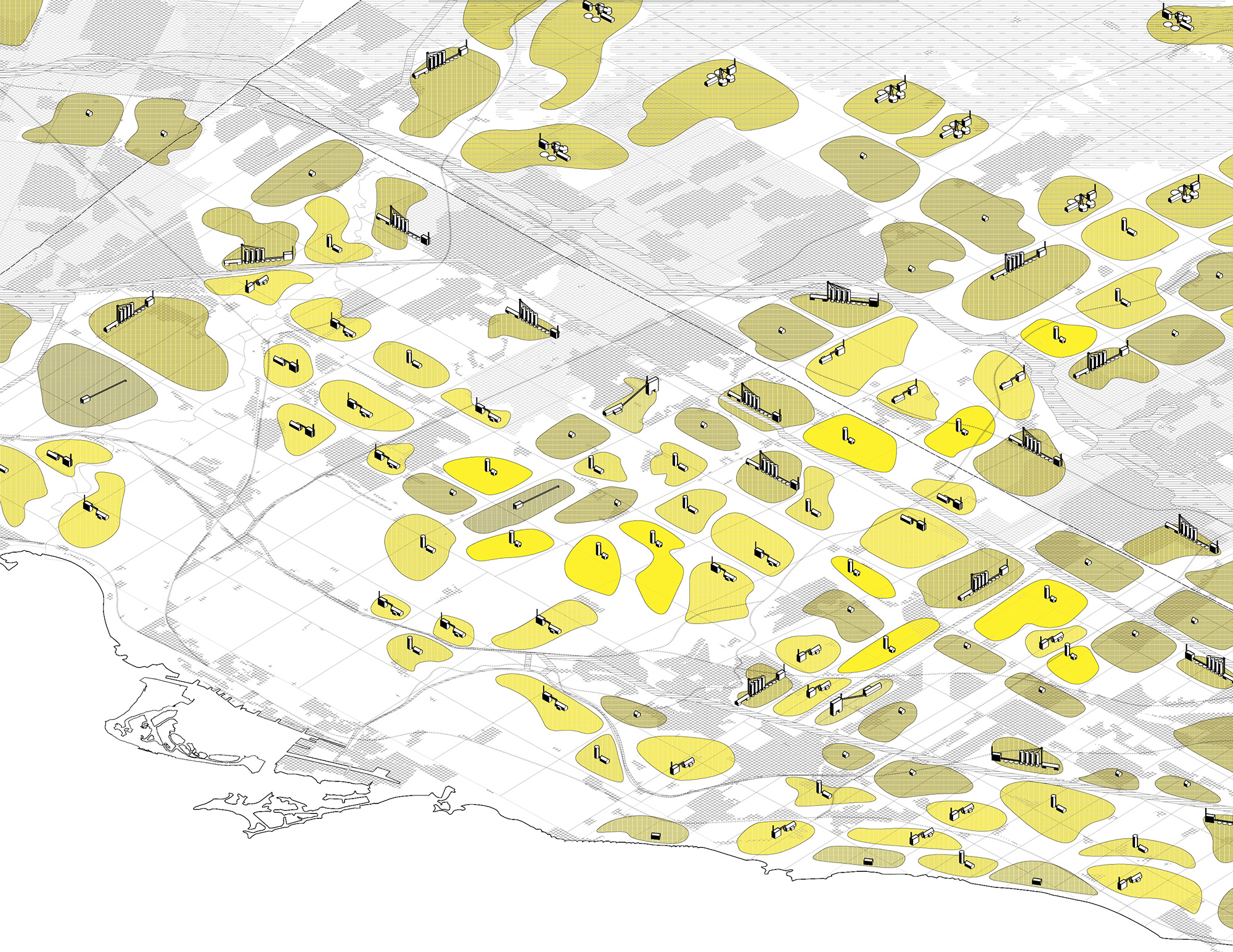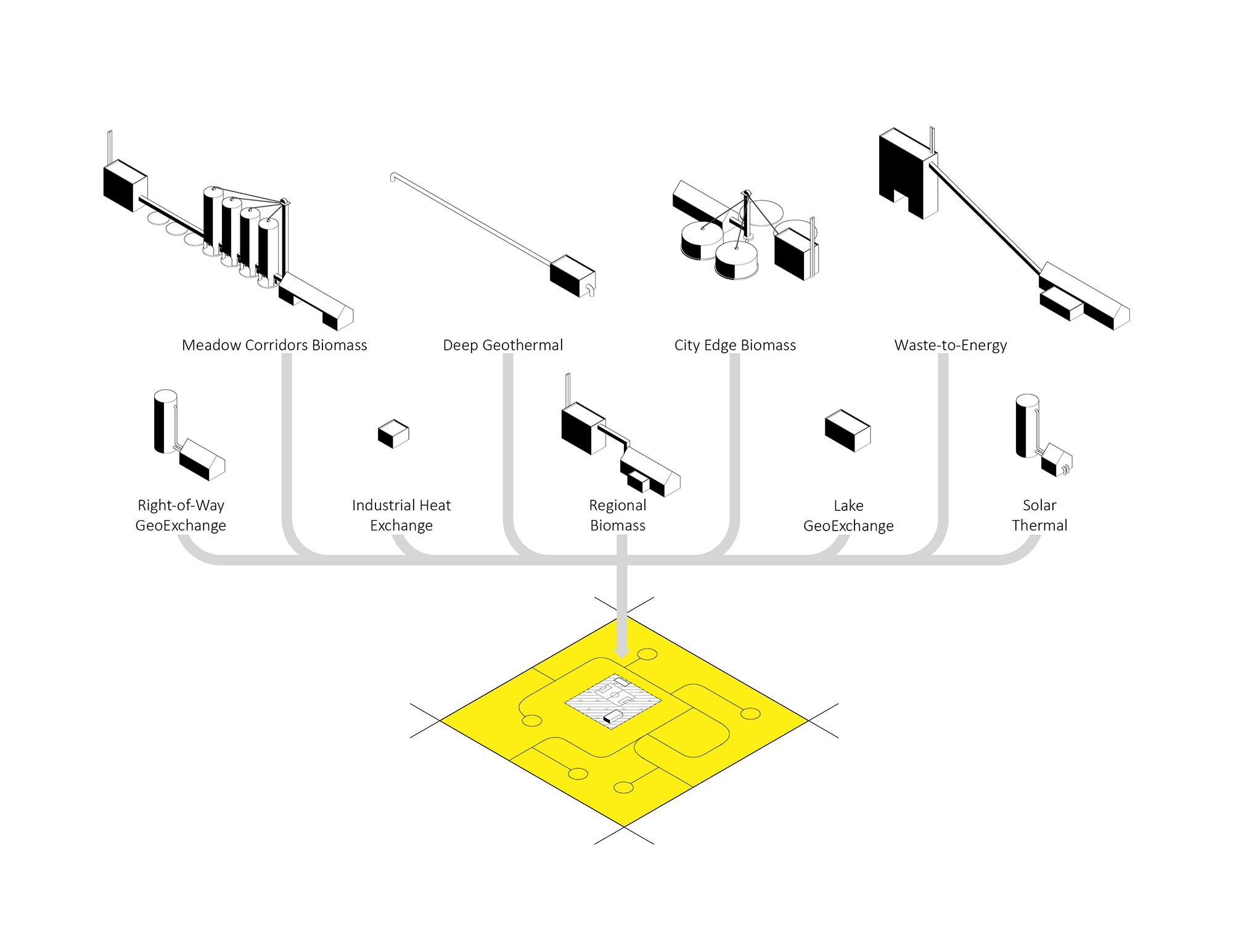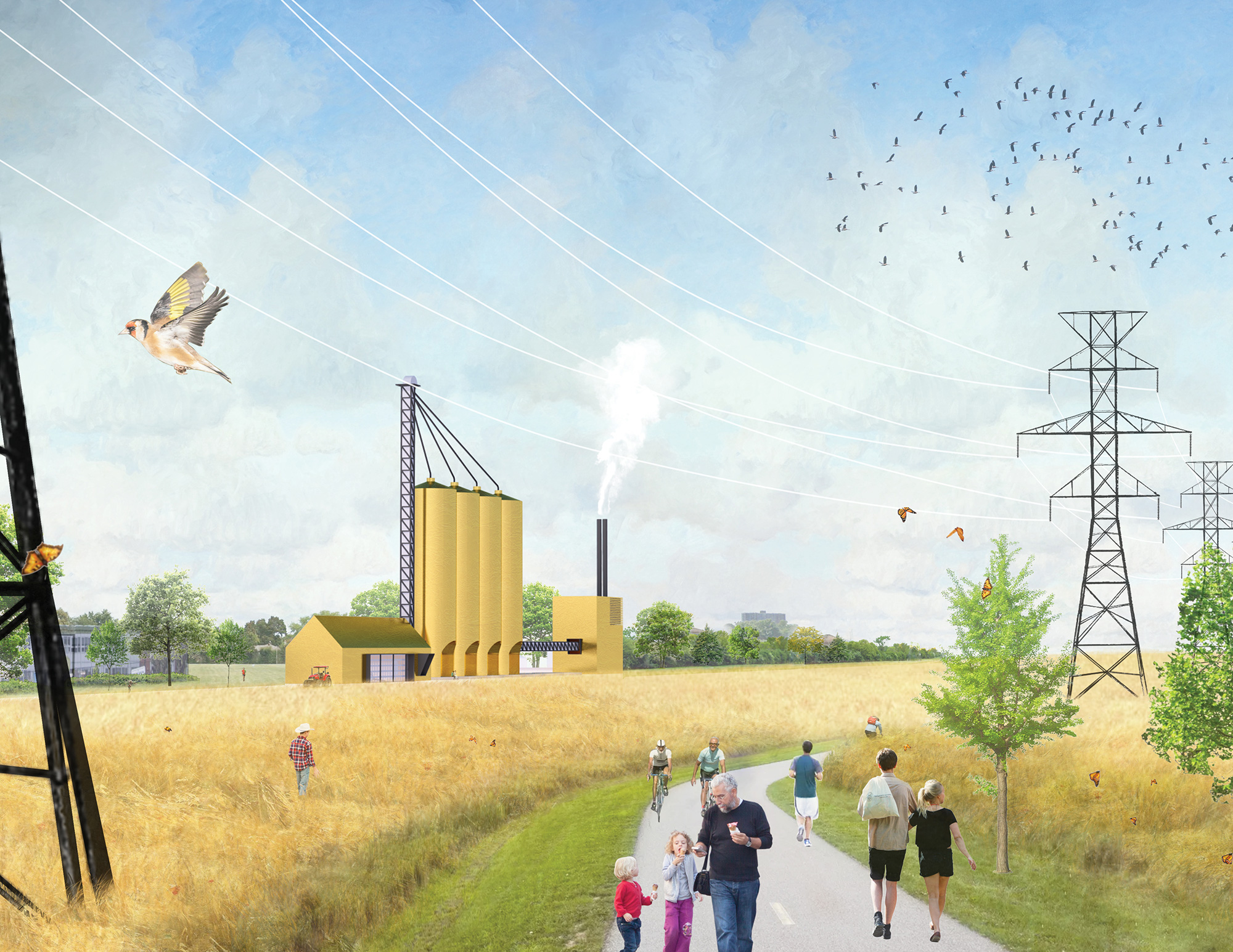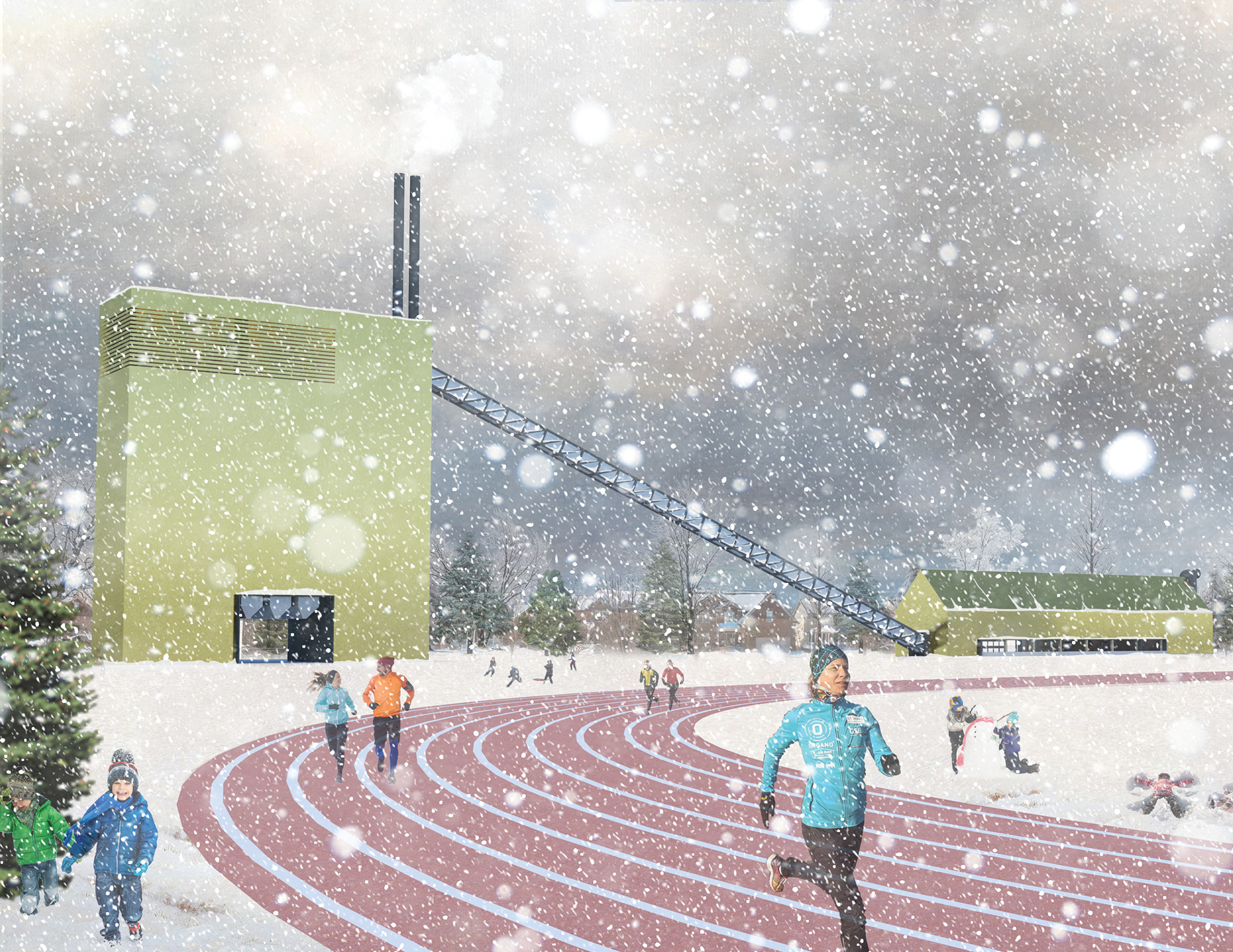
Isaac Neufeld, "Toronto's Neighbourhoods: New Suburban Energy Landscapes"
Isaac wanted to design a way to make Toronto's inner suburbs more energy efficient. As he researched the problem, he came across a surprising fact: approximately 90 per cent of the greenhouse emissions from an average detached home in Toronto are related to natural gas consumption for hot water and space heating. Isaac concluded that the best way to dramatically reduce the energy consumption of the suburbs was to somehow replace those natural gas lines with another, more sustainable source of heat energy.
For inspiration, he looked to Europe, where there are numerous examples of what are known as "district energy systems" — small-scale energy production facilities designed to supply heating, cooling, or electricity to a tightly focused geographical area.
With financial assistance from the Daniels Faculty's Paul Oberman Graduate Student Endowment Fund, Isaac spent several months travelling across Europe and visiting district energy plants in France, the Netherlands, Denmark, Norway, Italy, Iceland, and Austria. He also studied some examples of district energy systems closer to home, like Toronto's Deep Lake Water Cooling system, which uses Lake Ontario's waters to provide air conditioning to downtown office towers.
Isaac conducted a survey of different suburban neighbourhoods in Toronto, paying careful attention to specific geological and physical qualities that might influence the way a district heating system could be deployed in the area. Eventually, he developed nine different types of district heating plants that could be deployed in various areas around the city. For instance:

An illustration of Isaac's nine different district energy plant types.
Meadow Corridors Biomass plants would be deployed in areas adjacent to large, grassy utility corridors. The plants would take vegetation harvested from the utility corridor — likely something like switchgrass, which is easy to grow in high volumes — and burn it in order to heat a central supply of hot water. The hot water would then be distributed to nearby homes and businesses.
For neighbourhoods with very little green space or tree coverage, Isaac designed a Solar Thermal plant. This type of plant would heat water with solar panels, and then store the heated water in a large tank for distribution.

A rendering of one of Isaac's Meadow Corridor Biomass plants.
For neighbourhoods located next to employment lands, Isaac designed an Industrial Heat Exchange plant, which would take excess heat from industry and redistribute it as energy.
Lake GeoExchange plants, in neighbourhoods located along Toronto's Lake Ontario shoreline, would produce geothermal heat from lake water.

A running track is heated by a district waste-to-energy plant.
All of Isaac's district energy plants are relatively small and could be built on public land, often beside existing schools or parks. The designs are intentionally basic. “These are simple industrial buildings," Isaac says. "While they aren’t fancy, they are sited to complement schools and define public space. In addition to supplying sustainable heat and hot water to the neighbourhood, they also enhance peripheral programs on the school sites. For example, they might heat a running track, so that it can be used in all seasons. Or they might supply energy to a community pool, or a greenhouse.”
Advisor: Michael Piper
Top image: Drawing showing proposed locations for Isaac's district heating plants.

